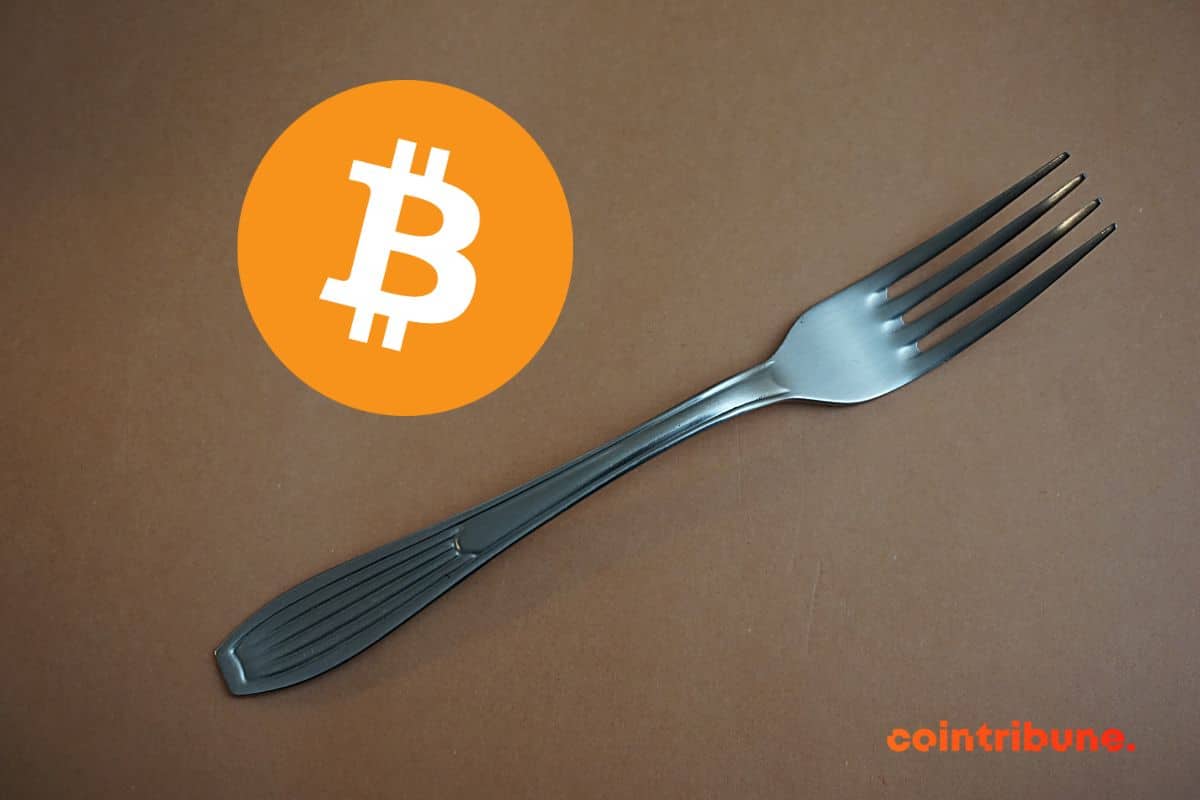Discover how Ethernity Cloud's decentralized DNS enhances security and privacy on the Internet.
Theme Blockchain
Discover how Ethernity Cloud utilizes cutting-edge technologies for optimal protection of your personal data.
Discover how Ethernity Cloud is revolutionizing cloud computing with enhanced security and decentralized data management.
Memecoin or useful blockchain? Changpeng Zhao insists: it is time for crypto to create real value. The details!
Voracious staking, audacious Dencun: Ethereum teeters on the inflationary precipice. Between vision and chaos, the future is being written under tension.
On November 22, Solana (SOL) reached a new all-time high of $264.31, marking impressive resilience two years after the collapse of FTX! This 11% increase in 24 hours reflects renewed investor confidence in the Solana crypto ecosystem.
Sui, "killer" of Solana? Perhaps, but surely not of failure. A technical pause of two hours... at least.
In crypto, Ethereum is a bit like that talented marathon runner always stuck in its shoelaces at the starting line.
Tectum, the fastest layer 1 blockchain, has launched its Light Node, an innovative tool for the development and management of custom tokens. This solution promises to simplify developers' interactions with the decentralized crypto network, while offering increased efficiency compared to full nodes.
Bitcoin reaches $90,000 and long-term holders are taking profits. However, can BTC really reach $100,000?
The blockchain oracle giant Chainlink has unveiled a major innovation: the "Chainlink Runtime Environment," a revolutionary framework aimed at creating a unified gateway between traditional finance and the blockchain universe. This technological advancement promises to radically transform the interaction between legacy banking systems and smart contracts.
The crypto market in Russia will reach 10 trillion rubles by 2026! Here is the element that will change everything.
Bitget, the leading cryptocurrency exchange and Web3 company, proudly announces its upcoming “Pitch n' Slay” event at DevCon Bangkok on November 15, 2024, as part of its Blockchain4Her initiative. This exclusive event will empower female founders in Web3 by providing essential resources such as funding, mentorship, media exposure and a global platform to amplify their innovative projects.
If you have just started to explore the world of Bitcoin, you have surely come across various technical terms that are difficult to understand. Today, we will discuss Proof of Work, the consensus mechanism that ensures the security of Bitcoin. But you are probably wondering: How does it work? Discover in this guide all the inner workings of the most widely used validation mechanism in cryptographic systems.
The entire technology surrounding the Bitcoin ecosystem continues to fascinate us. Every element and feature is important for ensuring the proper functioning, security, and decentralization of the network. This is the case with the hashrate, which is a measure of the total computational power required by the Bitcoin network to validate new blocks. The hashrate is essential for the Bitcoin mining process. But what exactly is it? How does it work? And above all, what is it used for?
Victim of its success, the Bitcoin network faces congestion problems: cryptocurrency transactions take longer to be validated and fees are higher. It is in this context that Segwit came into being, bearing the improvement proposal number BIP141. This is a soft fork of Bitcoin that helps to address the scalability of the network. In addition to improving the performance of the ecosystem, this upgrade has also brought better security to transactions. But how does Segwit actually improve the BTC blockchain? We explain everything in this comprehensive guide.
The Bitcoin blockchain is a distributed ledger technology that underpins the first and most iconic cryptocurrency: Bitcoin. Since its creation in 2009, it has sparked global interest, challenging our conception of money and transactions. With its growth, debates have intensified around its environmental impact and its ability to scale without compromising its principles of decentralization. This article reveals the mechanisms of the Bitcoin blockchain, clarifying its complex functioning and practical implications for users and society as a whole.
Bitcoin, with its decentralized architecture, has revolutionized the world of blockchain. However, its operation relies on considerable electricity consumption, raising questions about the sustainability of this system. This article explores the energy mechanisms of Bitcoin and examines the factors influencing its electricity consumption. It assesses the environmental consequences of Bitcoin's energy consumption and discusses potential solutions for a greener future.
Bitcoin Diamond (BCD) is one of the major blockchain projects that emerged following a hard fork of Bitcoin (BTC). It was designed with the aim of overcoming certain challenges faced by its predecessor. In this article, we will examine the history, functionality, and potential benefits of BCD. Finally, we will explore how Bitcoin Diamond could evolve and develop in the future within an increasingly competitive cryptocurrency market.
Bitcoin (BTC) has revolutionized the financial world by offering a decentralized alternative to traditional online transactions. Since its launch in 2009, it has attracted a large community of users and developers, but it has also faced debates on how to evolve and develop. To resolve these differences, some members of the community have chosen to fork the Bitcoin blockchain. What does this term refer to? What are the different types of forks and how do they work? What are the impacts for users and miners? Let’s explore the world of forks together to deepen our understanding of how Bitcoin operates.
Data security is a crucial issue, especially in a digital world where hacking and privacy breaches are becoming increasingly prevalent. To ensure the protection of digital files, one of the most effective means is the use of hashing algorithms. These have the particularity of transforming any type of data into a unique digital fingerprint that preserves its integrity. In this article, we will explain how this fingerprint is calculated for a file. For this practical case, we will use SHA-256, the hashing algorithm used by the Bitcoin protocol. But first, let's explore the fundamentals of hashing in general, and SHA-256 in particular.
Merkle trees are a fundamental element of blockchain technology. They are used by most protocols, starting with Bitcoin, which relies on the Proof-of-Work consensus mechanism. However, they are utilized by most protocols to ensure the security and integrity of data on the network. If you are interested in the queen of cryptocurrencies, you have probably heard of them, but without really grasping how they work. In this article, we will explain to you precisely and in detail what Merkle trees are and their utility for the Bitcoin network. You will also discover the limitations and prospects of this technology.
Eclipse launches its mainnet, combining Ethereum and Solana for fast and cost-effective crypto transactions!
Wecan Group, a Geneva-based fintech, transforms KYC compliance in Europe through a decentralized blockchain solution. Sought after by institutions in financial centers in Luxembourg, this innovation redefines traditional practices, enhancing security and efficiency.
Bitget, the leading cryptocurrency exchange and Web3 company, has launched “Pitch n Slay,” a special initiative under its Blockchain4Her program organized to provide exposure for female entrepreneurs in the blockchain space. Building on Bitget’s larger $10 million Blockchain4Her project, the program extends targeted support to promising women-led startups by offering them a chance to secure up to $100,000 in funding by Foresight Ventures. This funding is accompanied by valuable mentorship from experienced professionals in the blockchain industry.
Discover how Switzerland is innovating in KYC management and inspiring a European framework for cryptocurrencies.
The digital auction "Bridging Worlds" organized by Christie's concluded on October 30th with remarkable success, marking an important milestone in the convergence between digital art and philanthropy. The crypto initiative, which brought together eleven artists for the benefit of UNHCR (the United Nations High Commissioner for Refugees), notably attracted a new audience of collectors.
Solana is surging, with Raydium leading: crazy volumes, Ethereum under pressure... the crypto duel is intensifying for real.
The United States Department of the Treasury recently announced an innovative strategy aimed at using crypto, stablecoins, and blockchain technologies to broaden access to financial services and especially to…
Palo Alto, CA, Oct. 28, 2024 – The Palo Alto AI X Web3 Summit, a two-day event running from October 30 to 31, 2024, is set to kick off at Stanford University. This premier gathering will bring together 50+ industry leaders and innovators to discuss the convergence…





























